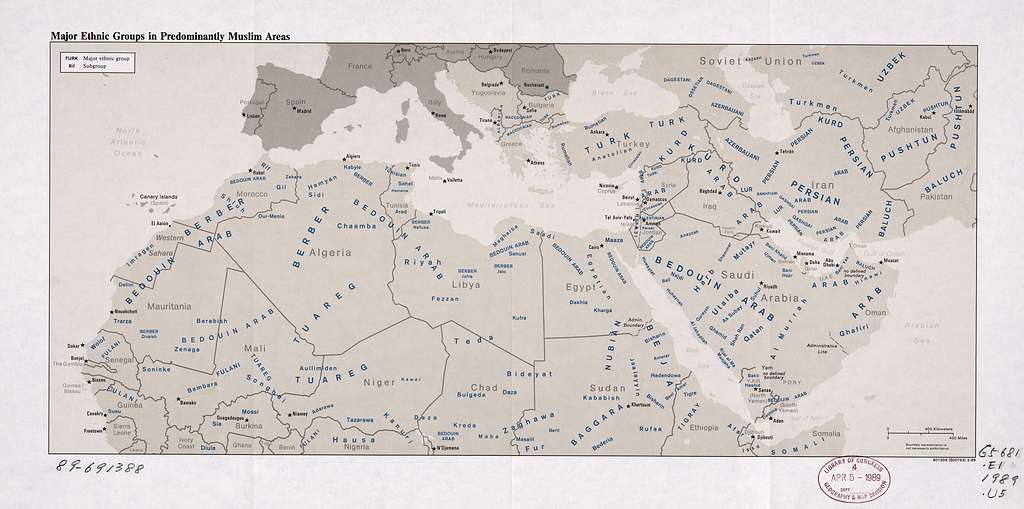2.1.2 Venture of Islam

Major ethnic groups and subgroups in northern Africa and Middle East. US Library of Congress, 1989.
In the short term the headlines make it very difficult to turn from immediate crises that fuel the popular media to calmer assessments—at once more productive and more predictive—of historical change. That is why Hodgson is both so necessary and so perilous as a catalyst for our 21st century engagement with Islam (LA Review of Books, 2014).
Read: Genius Denied and Reclaimed: A 40-Year Retrospect on Marshall G.S. Hodgson’s The Venture of Islam // LA Review of Books
- What was unique about the Nile-to-Oxus region? How did this uniqueness shape the religion and culture of Muslims?
- Why did Hodgson introduce the term Islamicate? How is it different from “Islamic”?
- What historical misunderstanding does Hodgson seek to correct?
- How has Hodgson’s work impacted the field?
Thumbnail: “De Materia Medica (Das Kräuterbuch) des Dioskurides.” Image Credit: Arabischer Maler des Kräuterbuchs des Dioskurides, 1229, at the Topkapu Saray Museum. Wikimedia Commons.


